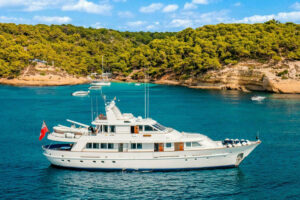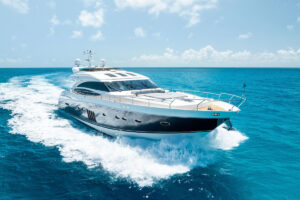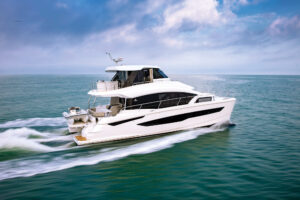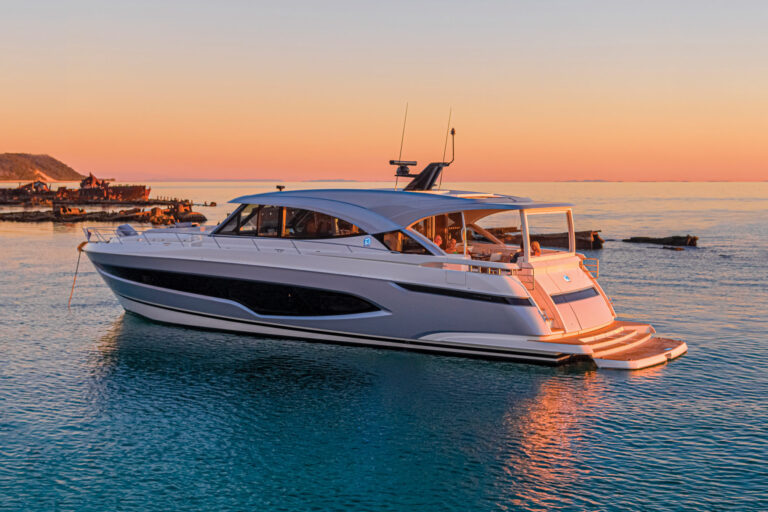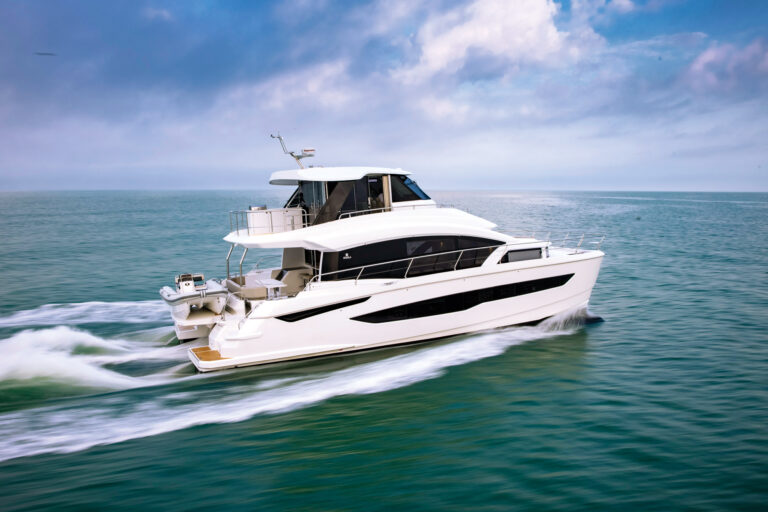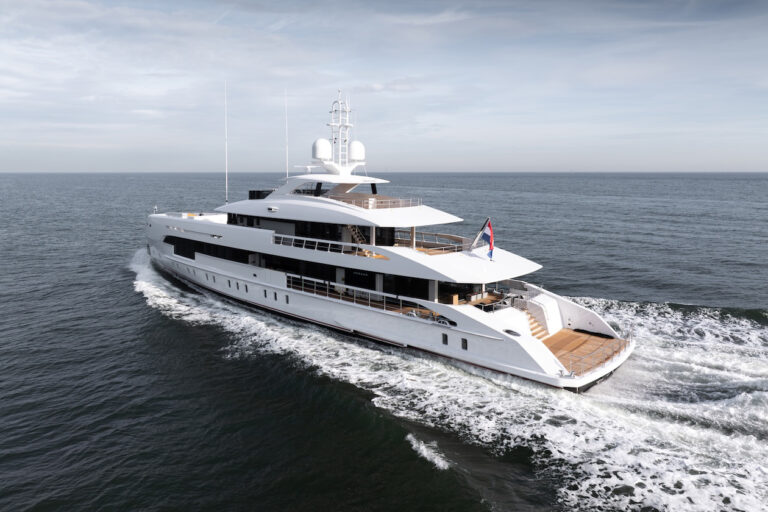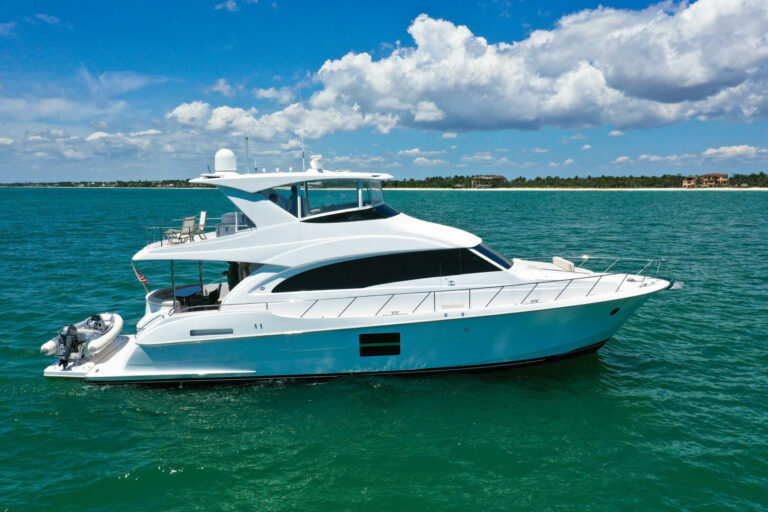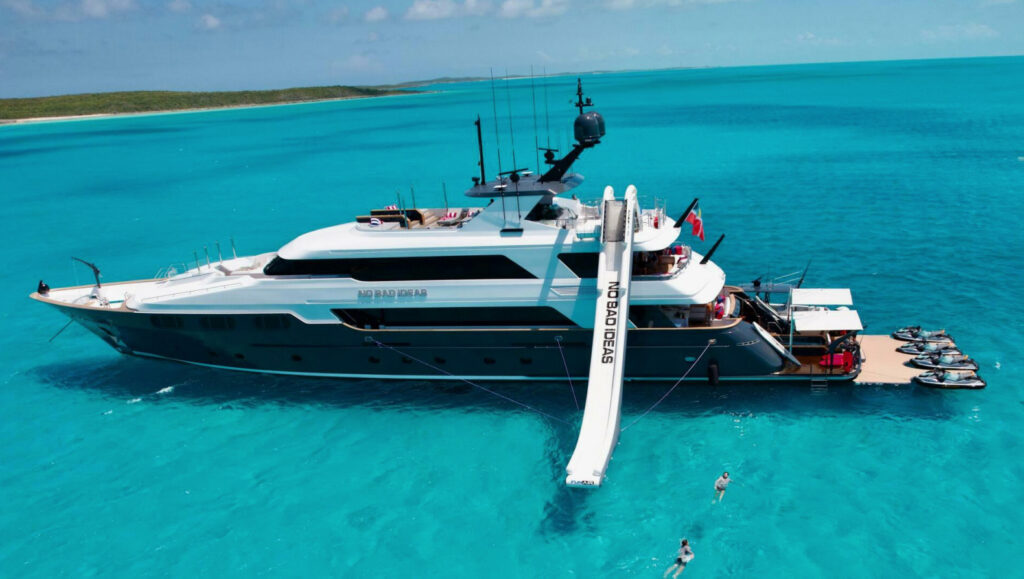
Trinity Yachts was a custom superyacht builder based in New Orleans with a 27-year history of producing aluminum- and steel-hulled superyachts. No Bad Ideas is a 2000 160-foot Trinity currently listed with Worth Avenue Yachts which underwent a $20 million, two-year refit that finished in spring 2024. Worth Avenue Yachts says, “Every facet of the yacht has been meticulously replaced or revitalized, ensuring a turn-key experience for its new owner. This remarkable vessel presents a unique opportunity to acquire the most comprehensively updated Trinity in existence.”
The extensive refit includes the hull being extended by 10 feet, new paint, a complete interior refit by A La Mer, new exterior upgrades, all new electrical, new safety equipment, air-system upgrades and more.
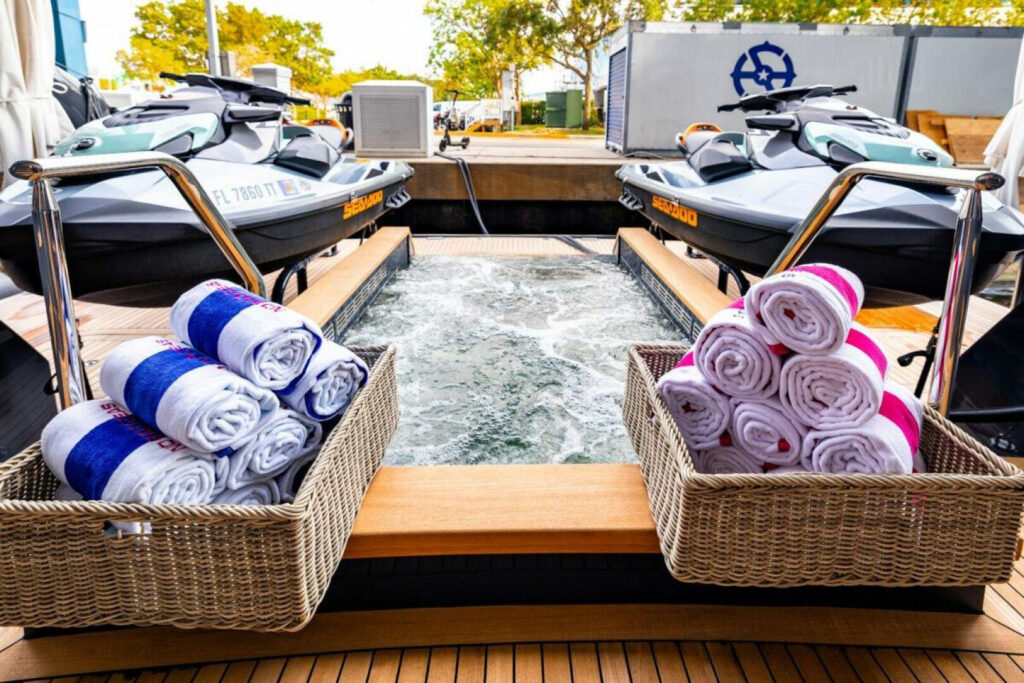
Impressive outdoor spaces onboard No Bad Ideas are abundant, starting with the swim platform. At anchor, the extended swim platform transforms into a unique beach club with a built-in 10-person hot tub, freshwater shower and two large umbrellas. While underway, two PWCs are stored on the swim platform.
The main deck cockpit is for lounging with a four-person bar and the transom settee and oversized ottomans. Moving up to the bridge deck’s aft deck, guests will find the exterior formal dining space with a 12-person high-gloss dining table, and there is a semi-wrap-around settee and lounge pad aft for post-dinner discussions.
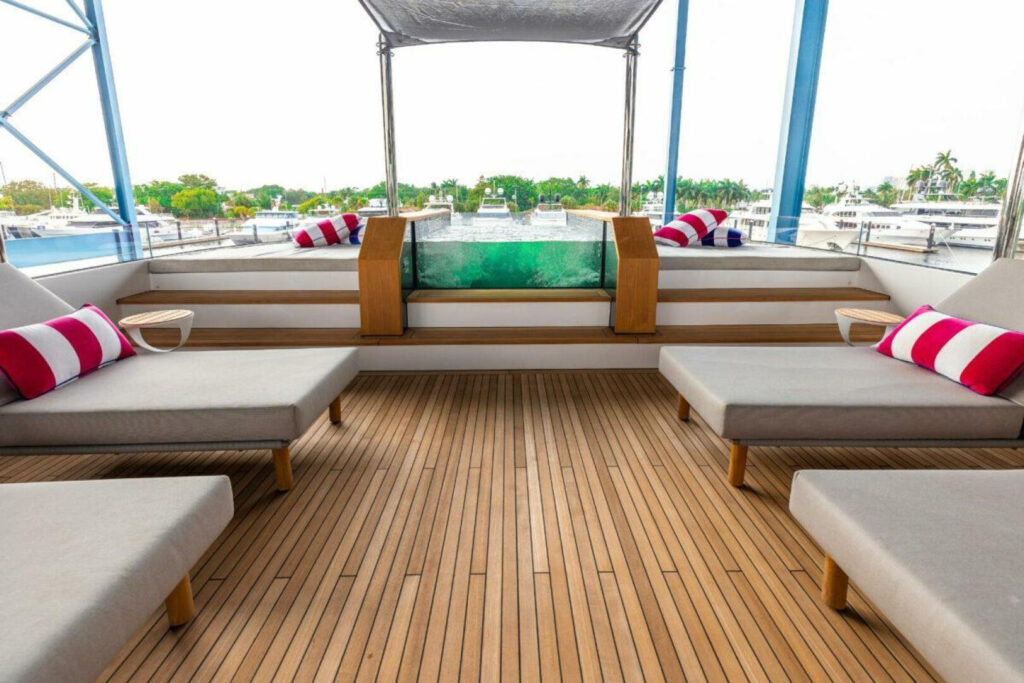
While the aft section of the sun deck is used for tender stowage, a six-person bar and a U-shaped dinette sits amidships. Forward, four chaise lounge chairs are abaft a 10-person Jacuzzi with sun pads on either side. The Portuguese bridge deck features an oversized lounge area with custom seating for 12, which surrounds a gas fire pit, along with two sun beds forward that flank the walkway to the bow where two more PWCs are stowed.
Regarding interior entertainment spaces, the main deck salon has a conventional layout with a lounge area aft and formal dining forward. The bridge deck skylounge has additional lounge seating and a four-stool bar. No Bad Ideas has both an on deck master suite as well as an on deck VIP suite. Four additional king-berth staterooms reside belowdecks, all en suite. Two of the king berths can convert into double twin berths.
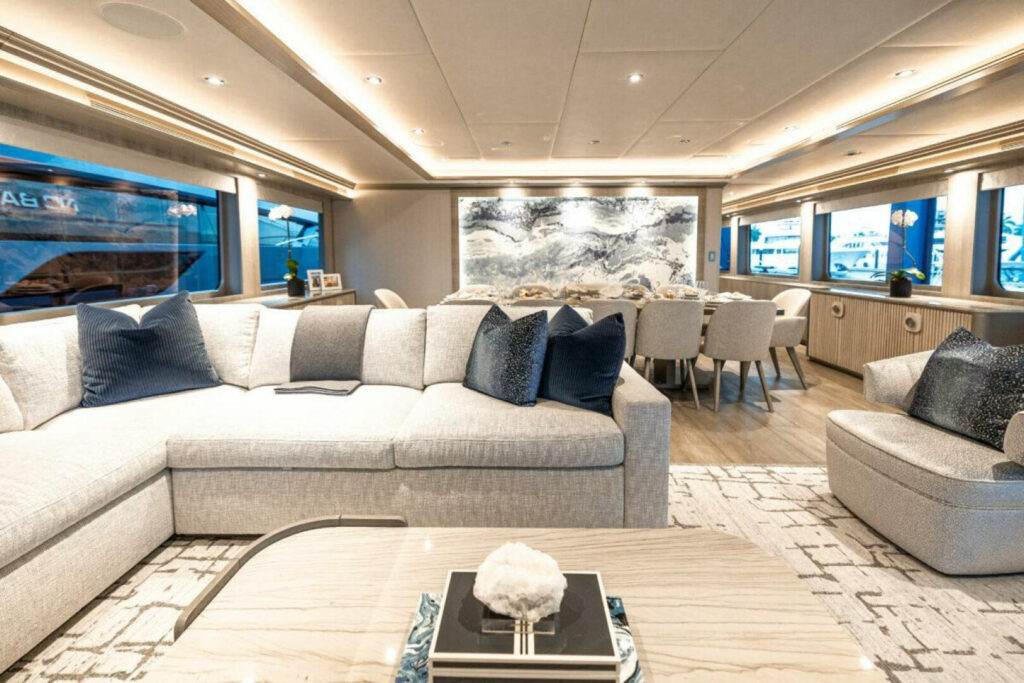
Crew accommodations onboard sleep up to nine people. The captain’s cabin is on the bridge deck aft of the wheelhouse with a double berth and en suite head. The engineer’s cabin is belowdecks aft of the engine room with a bunk bed and an en suite head. Three additional crew cabins are forward on the lower deck, each with twin/bunk-style berths and en suite heads. The crew lounge has an L-shaped dinette.
Twin 2,250 hp Caterpillar 3512 turbocharged, freshwater-cooled marine diesel engines provide propulsion, giving No Bad Ideas a 22-knot top speed and a 13-knot cruise. The engines have 8,429 hours on them as of May 2024.
It’s also worth noting the owner is open to selling 50 percent ownership share for interested parties.
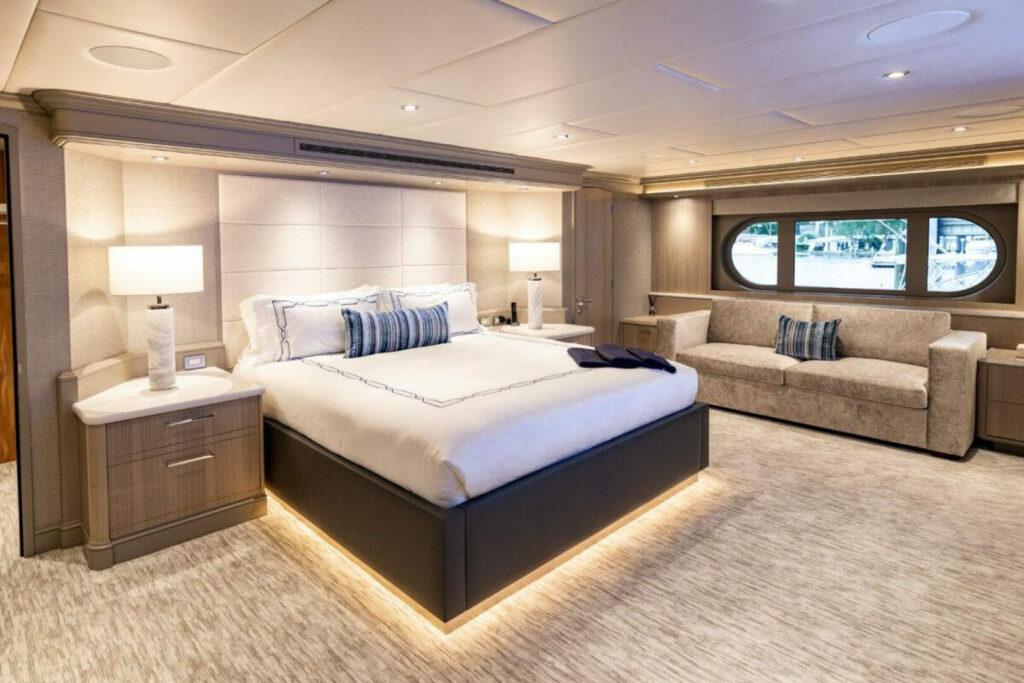
Where is No Bad Ideas located? The yacht is currently lying in Nassau, Bahamas.
Take the next step: contact the listing agent, Ralph Raulin, Ralph@WorthAvenueYachts.com, (561) 302-7894
Quick Specifications
- Length Overall: 160’
- Maximum Beam: 29’
- Fuel Capacity: 16,250 gallons
- Draft: 7’11”

